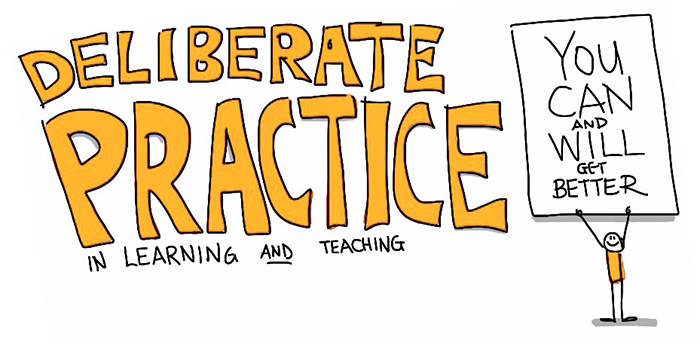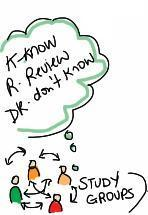Teacher For Learning
Teacher for Learning
Metacognition
Students need to assess the demands of the task, evaluate their own knowledge and skills, plan their progress, monitor their progress, and adjust their strategies as needed.
Self-directed learning and actively taking the time to reflect on one’s own learning is described as metacognition. Developing metacognitive skills through deliberate practice and embedded checkpoints fosters intellectual habits that are valuable for learning retention and across disciplines.
These checkpoints should occur at the beginning of the learning where students are encouraged to practice task assessment and planning. Metacognition should continue through the evaluation of the outcomes and adjust approaches accordingly.
A very important factor for developing this flexible mindset is rooted in students’ self-efficacy. It is extremely useful for instructors to stress the importance of developmental approaches so that they can fully appreciate that intelligence is not fixed.


Here are some helpful prompts to ask your learners:
- What do I already know about this topic?
- How does this topic make me feel?
- Does this topic relate to something I already know?
- How can I apply this topic in another context?
One activity that can be done at the end of class is Stephen Brook’s critical incident questionnaire (CIQ).
Other metacognitive strategies that lead to self-directed learners are Note-taking (see organization), One Minute Paper (see feedback & practice), Reflective Writing (nuggets), Exam Wrappers, and Retrospective Post-Assessment.
Extend Activity

This activity is taken from the Thought Vectors in Concept Space syllabus designed by Dr. Gardner Campbell for an undergraduate research and writing course at Virginia Commonwealth University.
Nuggets: Review The Faculty Patchbook, a collection of faculty authored overviews of specific pedagogical skills. Then select one article that resonates with you. Select a passage from the article that grabs you in some way and prepare to make that passage as meaningful as possible.
It could be a passage that puzzles you, or intrigues you, or resonates strongly with you. It could be a passage you agree with, or one you disagree with. The idea here is that the passage evokes some kind of response in you, one that makes you want to work with the passage to make it as meaningful as possible. A good length for your nugget is about one paragraph or so. Too much, and it becomes unwieldy. Too little, and you do not have enough to work with.
How do you make something as meaningful as possible? Well, use your imagination. You will probably start by copying and pasting the nugget. Or if you are feeling very multimedia inclined, read your nugget aloud and create an audio file. From there, consider hyperlinks, illustrations, video clips, animated gifs, screenshots, infographics or whatever. Refer to the Extend Toolkit to help you with a technical tool selection choice for this activity. Obviously, one of the main goals of this assignment is to get you to read carefully and respond imaginatively. Your work with “nuggets” should be both fun and in earnest. It should demonstrate your own deep engagement and stimulate deep engagement for your reader as well.
Please share the nugget made meaningful as a response to the Thought Vectors activity.
As evidence of completion, please plan to enter the web address for your response in the Teacher for Learning badge submission form.
Extend Activity

Throughout this module we have explored various types of metaphors for teaching and learning.
Prior learning was baggage.
Motivation was drive.
Mastery and organization of knowledge are like component building blocks toward a cohesive structure.
Self-direction and metacognition are like our own internal GPS signaling our own personal wayfinding.
Now it is time to put it together considering your own teaching philosophy. What is your metaphor for teaching and learning?
See some exercises for exploring your teaching philosophy and some metaphors for teaching from the University of Waterloo.
Find a photo or draw a picture. Explain why this image represents you and your approach as a teacher.
Please upload or link your image and explanation as a response to the Your Metaphor activity.
As evidence of completion, please plan to enter the web address for your response in the Teacher for Learning badge submission form.




